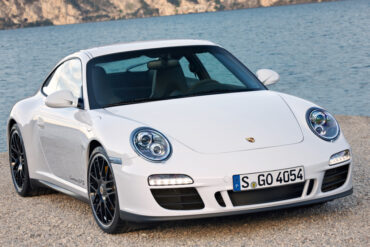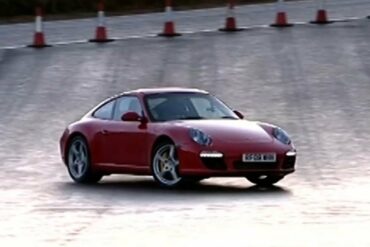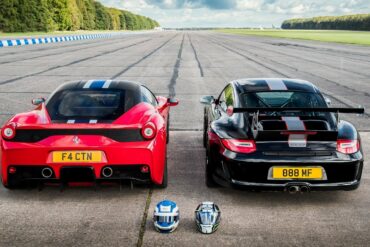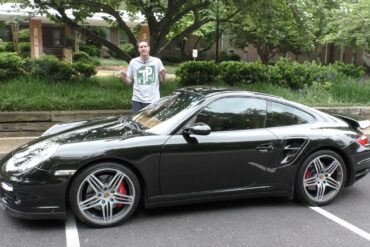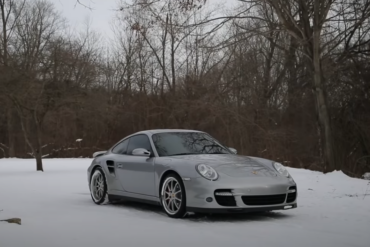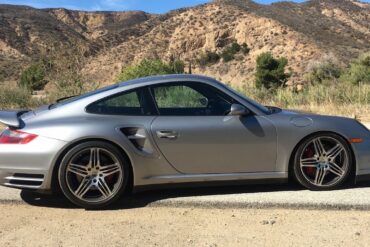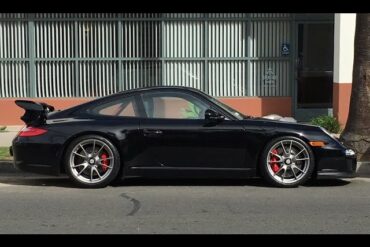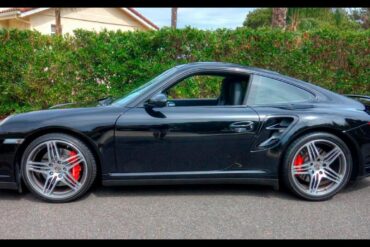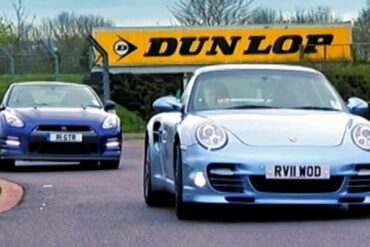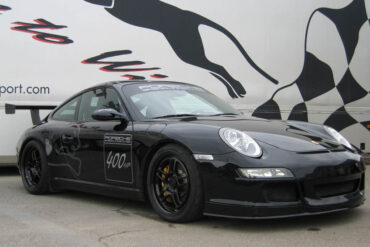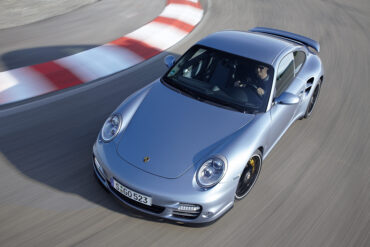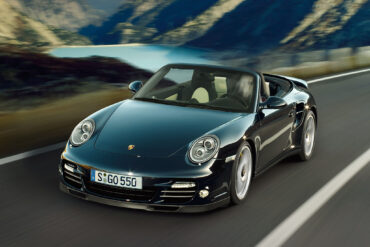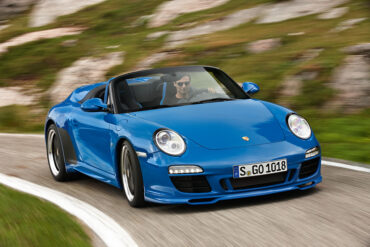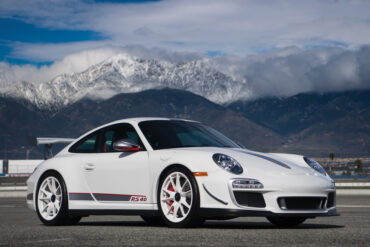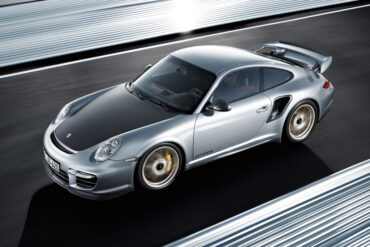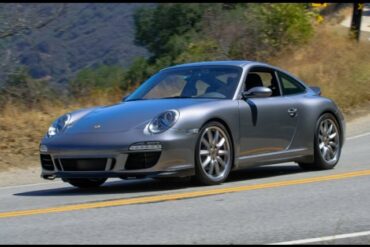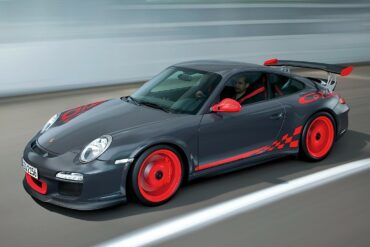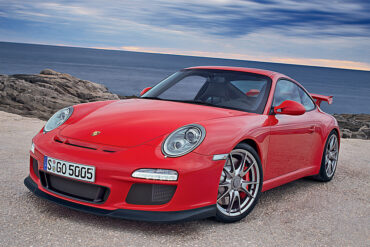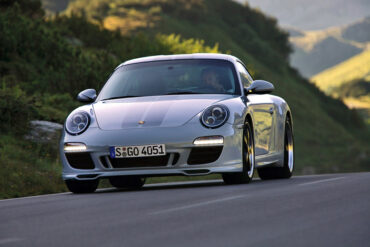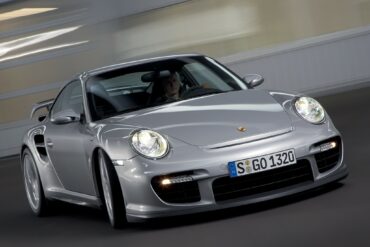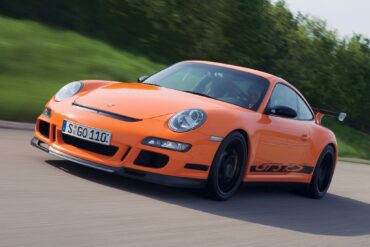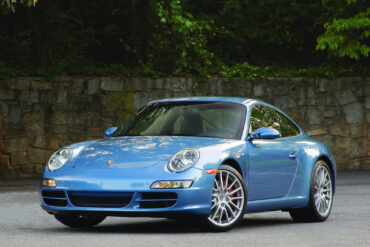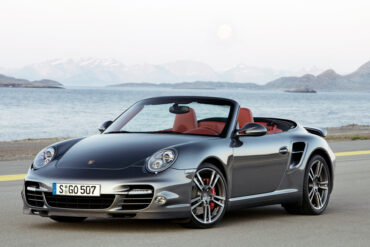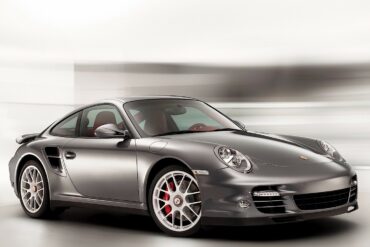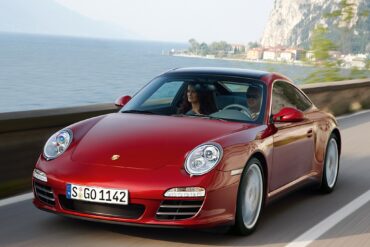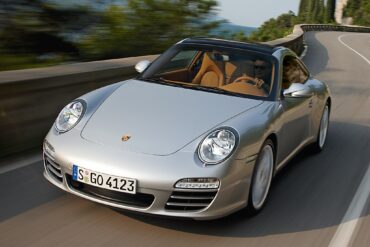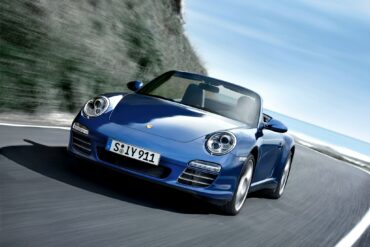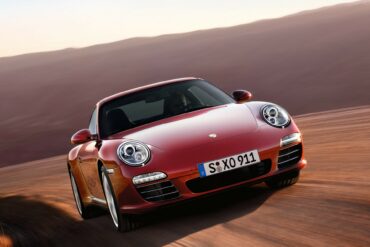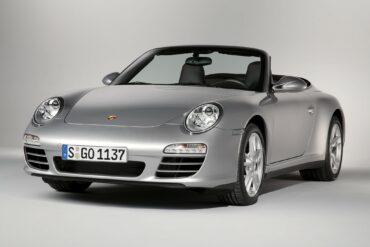DriveTribe Reviews the 997 GT3 RS Richard Hammond has always been a Porsche guy, but there is one generation of...
2009 – 2012 Porsche 911 GT3 & GT3 RS (997.2) Service Schedule (3.8 L & 4.0 L) This maintenance service...
2006 – 2009 Porsche 911 GT3 & GT3 RS (997.1) Service Schedule This maintenance service schedule checklist is ONLY for...
2005-2007 Porsche 911 (997.1) Carrera, Carrera S, Carrera 4, Carrera 4S, Turbo Service Schedule This maintenance service schedule checklist is...
2008 Porsche 911 (997.1) Carrera, Carrera S, Carrera 4, Carrera 4S, Turbo Service Schedule This maintenance service schedule checklist is ONLY...
Porsche 911 (997.2) Carrera, Carrera S, Carrera 4, Carrera 4S Service Schedule This maintenance service schedule checklist is ONLY for...
Old School Twin Turbo Flat-Six Noises! In today’s video I’ll take you onboard a gorgeous 2009 Porsche 911 997 GT2...
Head to Head – Porsche 911 GT3 (997) vs. 911 Carrera S (992) Little separates 997 GT3 and 992 Carrera...
“Naturally Aspirated Heroes” Enjoys Some Mezger Magic Naturally Aspirated Heroes is back for series 2! This time, we’re kicking off...
Is The 997 GT2 Really a $170k Experience? Based on the 997 Turbo, the GT2 was by the far the...
997 Carrera Depreciation and Buying Guide Buying a Porsche 911 997? Then this is the video to watch. In this...
Porsche 911 Sales Brochures (Type 997) We found quite a few Porsche sales brochures for the Type 997 911 generation....
Porsche 911 Spare Parts Catalogs (997, 2005 – 2012 Model Year) These official Porsche PET Diagrams and codes for the...
POV Driving In a 997 Carrera...
Porsche Option Codes – Porsche 911 (2012 Model Year) Looking to decode your 2012 Porsche 911 option codes? Want to...
Porsche Option Codes – Porsche 911 (2011 Model Year) Looking to decode your 2011 Porsche 911 option codes? Want to...
Porsche Option Codes – Porsche 911 (2010 Model Year) Looking to decode your 2010 Porsche 911 option codes? Want to...
Porsche Option Codes – Porsche 911 (2009 Model Year) Carrera/Carrera S/Carrera 4/Carrera 4S, Coupé/Targa/Cabriolet Looking to decode your 2009 Porsche...
Porsche Option Codes – Porsche 911 (2009 Model Year) GT3/Turbo/GT2, Coupé/Cabriolet Looking to decode your 2009 Porsche 911 option codes?...
Porsche Option Codes – Porsche 911 (2008 Model Year) Carrera/Carrera S/Carrera 4/Carrera 4S/GT3/Turbo/GT2, Coupé/Targa/Cabriolet Looking to decode your 2008 Porsche...
Porsche Option Codes – Porsche 911 (2007 Model Year) Looking to decode your 2007 Porsche 911 option codes? Want to...
Porsche Option Codes – Porsche 911 (2006 Model Year) Looking to decode your 2006 Porsche 911 option codes? Want to...
Porsche Option Codes – Porsche 911 (2005 Model Year) Looking to decode your 2005 Porsche 911 option codes? Want to...
The 996 Turbo basking in the beauty of the Western Cape How our man, Richard Wiley, came to be the...
The 997 Porsche Turbo – What You Need To Know Before Buying One Your ultimate buying guide for the Porsche...
Porsche 997 GT3 Rally Cars Sounding Spectacular...
RPM Technik CSR Full Review We placed our hands on a car that we’ve heard a lot about; the Porsche...
Should You Buy a Porsche 911 997...
The Porsche 997.1 GT3 is the greatest car ever! Rob Ferretti explains why he thinks the Porsche 997.1 GT3 is...
Sights & Sounds of the 997 GT3 Supercup Cars...
Taking the legendary 997 GT2 for a short blast In this weeks coffee run episode I take the legendary 997...
The 997 GT2 RS Is the Fastest Stick-Shift Production Porsche Ever The Porsche 997 GT2 RS is the rarest GT...
Top Speed On the Autobahn In A 9ff 911 GT3 1200HP Porsche 9ff 911 GT3 *HUGE TURBO* REVIEW on AUTOBAHN...
Based on the 530-bhp 911 Turbo S, the special-edition Porsche has carbon-fiber trim inside and out, plus upgraded leather, badging and the exterior colors of the 918, including the use of Acid Green on the brake calipers, illuminated sill plates, interior stitching and instrument cluster needles. Also limited to 918 units, the 911 Turbo S Edition 918 Spyder will be available in Coupe ($160,700) and Cabriolet ($172,100) forms, making this one very expensive dealer option.
In 2011, Porsche China released a special limited edition model to celebrate an active decade in the Chinese market. The Porsche 10 Year Anniversary Edition is yet another 911 of only ten copies, each with a stylish plaque with the chassis number. The Porsche has a Gold Bronze Metallic paint, combined with matte black carbon components such as the hood, rear wing, tailgate and side mirrors. Underneath, you will spot a 911 Turbo S. The interior is a combination of black with gold stitching leather, alcantara and carbon.
Porsche 911 Turbo 997 POV Drive Naturally Aspirated Heroes is back for series 2! This time, we’re kicking off with...
Don’t Wait for the New GT3 Just a little bit ago, I published a story about the new GT3 from...
This is why every car enthusiast should consider a 997 Porsche Carrera S ...
One of the best value sports cars on the used market? We review the Porsche 911 Carrera 997.2 to determine...
Porsche 997 GT3 Review Thanks to my good buddy Tom, I got behind the wheel of his incredible Porsche 911...
19Bozzy92, our favorite YouTuber, has caught an absolute stunner this time around, across two videos. The stunner in question is...
Porsche 997 GTS Review Today, the 997 GTS is revered as one of the high water marks of the 911’s...
2020 Porsche 911 Carrera S vs 2010 Porsche 911 Carrera S This is the new 2020 911 Carrera S, and...
Porsche 997 GT2 RS versus 991 GT2 RS Porsche’s 991 GT2 RS remains the most powerful and fastest 911 ever...
2010 Porsche 911 GT2 RS (Type 997), Llandow Circuit, Cardiff, Wales, UK (2014) The GT2 has been Porsche’s top performing...
Porsche 911 997 Turbo PDK Review Today I’m driving Scott’s 911 997 Turbo. This car is equipped with the tiptonic...
Chris Harris Drives The Ferrari 458 Italia & Porsche 911 GT3 RS Ferrari’s latest 562bhp V8 coupe has changed the...
The GTS was powered by the same engine that was installed under the limited-edition Porsche 911 Sport Classic, but it was offered with more options. It wasn't just a driver's car, it was built for the passenger as well, with more options for comfort. From the outside, the Carrera GTS Cabriolet featured the same wide body as the Carrera 4 Cabriolet. At the front, the sport design apron featured a black lip-spoiler underneath. The Carrera GTS logo was painted on the doors. In the back, the car was fitted with LED taillights and four-round exhaust pipes. The 19” light-alloy wheels with central log-nut were fitted as standard.
A Special Widebody 997 Had the pleasure of shooting Mun’s crazy Old & New widebody and bagged 997. Special thanks...
Henry Catchpole Reviews A Bespoke 911 CSR ...
Porsche 997.2 GT3 RS Video Review This is the Porsche 997.2 GT3 RS and we’re back for Season Two of...
I’m a 911 fan, through and though – but my last experience of a turbo-powered Porsche was very disappointing. I...
Greatest Porsche GTs – The Ultimate Head to Head Porsche has been making GT cars for 20 years, and its...
Le Mans 24 Hours, 16-17 June 2007: Busy grid just before the start of the race Porsche introduced their new...
Porsche 911 GT3 RS (997.2) Drive Through the Hills As the Porsche 911 GT3 dynasty turns 20 years old this...
Rennsport Collective, Donington Hall, 20 July 2019: Porsche 996 GT1 Evo 1997 on display with numerous other Porsche classics They...
Sharkwerks Porsche 911 GT3 997.2 Makes Some Spectacular Sounds Tyler’s speed yellow GT3 with one of the best sounding exhausts I’ve...
Porsche 70 Years – There Is No Substitute: by Randy Leffingwell © Quarto Publishing It’s a heavyweight book, landscape in...
GT3 RS 4.0 RS Ride & Review Our first video with Henry at Lakeside Classics and what a way to...
Doug DeMuro Reviews the 911 GT3RS 4.0 The 2011 Porsche 911 GT3RS 4.0 is one of the most desirable modern...
Which Is a Better First Porsche? 996 C4S vs 997.2 C2 If you’re looking to buy your first 911, and...
I Straight Piped My Porsche 911 and It Sounds Insane The time has come to unleash the true beauty that...
Porsche 997 GT3 RS Chasing A GT3 On Public Roads I’m proud to bring on my channel the best Porsche...
It's not often Porsche creates an all-new model in their 911 lineup. But the 997 Carrera GTS is just that. It's faster, more powerful and better looking than any other model in the Carrera family. However it's still a little less hardcore than the 911 GT3, and a lot cheaper than the 911 Turbo. The Porsche 911 Carrera GTS features a 3.8 litre flat-six engine which is tuned to develop 408 horsepower, that's 23 hp more than the Carrera S manages. Think of it as the perfectly optioned Carrera S for less money.
Tiff Needell Reviews a 997 Carrera S Throwback Thursday clip from series 15 of Tiff reviewing the Porsche 911 Carrera...
458 Speciale vs 997 GT3 RS 4.0 Drag Race Welcome back to the 888MF YouTube channel. Sit back and relax,...
Porsche 911 997 Turbo Video Review I think the “997” Porsche 911 Turbo is an amazing bargain, with some models...
The 997 Porsche Turbo Is A Used Car Bargain We test the 997 generation Porsche Turbo with an APR tune....
Koncept Motorwurks Monster 997 Turbo Goes for a Canyon Run This is a prime example of how easy it is...
Porsche 997.2 GT3 Mountain Run The Porsche 997.2 GT3 featured several significant improvements over the 997.1 which preceded it. Center...
High Speed Run In a 997.1 Turbo The Porsche 997 Turbo can now be had for just under half it’s...
The Epic Sound of 997 GT3 in Nature...
Nissan GTR vs Porsche 911 Turbo S Tiff and Jason put two incredible cars up against each other in a...
2005 PSI CS400 CS400 is PSI’s first tuning project for the 997 Porsche and the car that will introduce the...
The heart of this most exclusive high-performance athlete is of course a six-cylinder boxer boosted by two exhaust gas turbochargers with variable turbine geometry, with an increase in power over the 911 Turbo by 30 to 530 bhp (390 kW). Maximum torque is a most impressive 700 Newton-metres (516 lb-ft). At the same time this new top model comes as standard with all high-tech components available only as options on the “regular” 911 Turbo. The 911 Turbo S comes exclusively with seven-speed Porsche-Doppelkupplungsgetriebe (PDK) conveying drive power to PTM all-wheel drive.
The heart of this most exclusive high-performance athlete is of course a six-cylinder boxer boosted by two exhaust gas turbochargers with variable turbine geometry, with an increase in power over the 911 Turbo by 30 to 530 bhp (390 kW). Maximum torque is a most impressive 700 Newton-metres (516 lb-ft). At the same time this new top model comes as standard with all high-tech components available only as options on the “regular” 911 Turbo. The 911 Turbo S comes exclusively with seven-speed Porsche-Doppelkupplungsgetriebe (PDK) conveying drive power to PTM all-wheel drive.
Paying homage to the first Porsche model that bore the name Speedster – the 356 Speedster – the production run for the new model is limited to 356 cars. The two-seater is significantly different from the other members of the 911 family. In the best tradition, the 60 millimetre lower, more raked windscreen, the flat contour of the sporty-look manual hood, and the characteristic double-bubble hardcover for the soft top define the striking profile of the new 911 Speedster. This makes the body of this rear-wheel drive with its 44 millimetre wider rear stand out even more.
This is the best 911 Porsche has ever made. The headline power figure and the ability to rev to 8,500 snare your attention, but the most staggering aspect of this engine is actually its tractability. Mid-range lunge is marvelous, even if the peak number of 339 pound-feet doesn't sound huge in the context of short gear ratios, lightweight, and a compact frontal area. In third gear, the way this thing flies between 4,500 and 8,500 rpm is scintillating. Plus, the utter progression of the delivery makes it vastly easier to take advantage of compared to the GT2's ridiculous turbo surge. This is one special car.
Porsche’s 911 GT2 RS is a brute, a lightweight, twin-turbocharged, 620-hp bout of madness that stemmed from Stuttgart’s quest to see how high up the sports-car ladder the 911 could punch. It is the most serious roadgoing Porsche ever. The engine is a port-injected, 3.6-liter flat-six from the Le Mans–winning GT1 race car of the late ’90s, with a pair of variable-geometry turbochargers huffing a maximum of 23.2 psi of boost into the combustion chambers. The result is 620 hp at 6500 rpm and 516 lb-ft of torque at 2250. It gets a six-speed manual gearbox and rear-drive only. Yikes.
Porsche 997 Carrera 4S Review Continuing our theme of “Wait, are these really that cheap?” A well cared for Porsche...
Based on the already primal 997.2 GT3, the RS gets another 15 hp from the 3.8-liter flat-six for a total of 450, or more than 118 hp per liter. A racing machine tamed for street use, the GT3 RS is hardly just about horsepower. It gets a wider track, it weighs less, and it produces more downforce than the GT3. The only available transmission is a six-speed manual gearbox (with the ratios even shorter than the GT3). A racing machine tamed for street use, the GT3 RS also gets a wider track, it weighs less, and it produces more downforce than the GT3.
Even more powerful, faster and more dynamic than ever before, the updated 997 Porsche 911 GT3 (differentiated from the earlier with a new 997.2 designation) is about to prove its enhanced potential. The Porsche 911 GT3 now reaches an even higher standard in its two main qualities: power and driving dynamics. The naturally-aspirated six-cylinder now increased in size to 3.8 litres is 435 bhp (320 kW), up 20 bhp over the previous model. In particular, the flat-six power unit carefully upgraded for even more muscle and performance offers a significant increase in torque at medium engine speeds. Road performance is spectacular.
The 997 Sport Classic is a limited edition version of the 997.2 Carrera S coupé inspired by the 1973 Carrera RS 2.7. The engine is rated at 413 PS (304 kW; 407 hp) and features a newly developed resonance intake manifold with 6 vacuum-controlled switching flaps. It includes a 6-speed manual transmission, double-dome roof (informally called double bubble roof), 44 mm (1.7 in) wider rear fenders, SportDesign front apron with a front spoiler and a fixed 'duck tail' rear wing. Only 256 were made.
The 2008 Porsche 997 GT2 is the most powerful and fastest roadgoing 911 Porsche has ever created. Power for the 997 GT2 comes from a 3.6 litre, twin-turbo, flat-6 cylinder engine which develops 530 bhp @ 6500 rpm, and a tire destroying 505 lb-ft of torque @ 2200 - 4500 rpm. most of the power gains have been achieved with changes to the turbo-charging system and the addition of a high-flow titanium exhaust system. Power is transferred to the rear wheels of through a 6-speed manual giving the car a 0-60 mph time of just 3.6 seconds and a 204 mph top speed.
The 997 911 GT3 RS is an even lighter and more purist version of the 911 than the regular GT3. 20 kilograms lighter than the GT3 and equipped with a close-ratio six speed manual the GT3 RS gets to 60 mph 1/10th of a second faster than the GT3. The 911 GT3 RS is 44mm wider at the rear than the GT3. The wider track helps improve directional stability when cornering. Weight savings can be found throughout the car. The Clubsport version there is a bolted roll cage, a six-point harness for the driver and a built in fire extinguisher.
In recognition of the 50th Anniversary of the Porsche Club of America (PCA), Porsche has created an exclusive 911 Carrera' S Coupe model featuring a distinctive exterior color, unique interior styling and commemorative touches, and a more powerful and higher performing engine. Limited to an exclusive production run of just 50 cars initially made available to eligible PCA members, the 911 Club Coupe was unveiled this past weekend at PCA's 50th Annual Porsche Parade in Hershey, Pa.
The 997.2 Turbo was introduced for the 2010 model year and received a new 3.8 litre engine capable of 493 horsepower, a significant evolution as compared to the 473hp in the 997.1 Turbo. The 997.2 Turbo was available in both manual and automatic transmissions, but the automatic evolved from the Tiptronic used in its predecessor, to a sportier dual-clutch PDK. Approximately 3,300 coupes were produced and 1,800 cabrios, far less than its predecessor. An epic all-around GT with more performance than you could ever need.
The 997.2 Turbo was introduced for the 2010 model year and received a new 3.8 litre engine capable of 493 horsepower, a significant evolution as compared to the 473hp in the 997.1 Turbo. The 997.2 Turbo was available in both manual and automatic transmissions, but the automatic evolved from the Tiptronic used in its predecessor, to a sportier dual-clutch PDK. Approximately 3,300 coupes were produced and 1,800 cabrios, far less than its predecessor. An epic all-around GT with more performance than you could ever need.
As with the previous 996 Targa model, the most striking feature of the car is the large, sliding-glass roof and glass rear hatch, which blend sleekly into the classic 911 lines while providing the Targa with its own unique personality. Like the rest of the range the Targa 4S got a visual refresh and the all-new direct injection engine. In the Targa 4S, it produced 380 bhp @ 6500 rpm and torque of 310 ft lbs @ 4400 rpm. 0 - 60 mph takes just 4.5 seconds (PDK) and top speed is 185 mph.
The 911 Targa received the same upgrades during the switchover to the 997.2 generation, including a boost in power and performance. The expansive glass roof now featured increased UV protection. This is the point in Porsche 911 Targa history when the model re-established itself as the perfect halfway measure between a true coupe and a convertible. Porsche engineered a wildly complex power-retracting center roof piece and left the rear glass fixed in place. Beyond this fabulous roof mechanism, it’s the same Carrera 4.
In the case of the 911 Carrera 4S Cabriolet that begins with a larger, more potent six-cylinder engine. The Carrera 4S is powered by a 3.8-liter flat six that produces 355 horsepower and 295 lb.-ft. of torque. The roughly ten percent increase in power translates to improved acceleration and higher top track speed. The 911 Carrera 4S Cabriolet with the six-speed manual gearbox races from a stop to 60 mph in only 4.7 seconds, topping out at the track at 185 mph. When carrying the optional Tiptronic S transmission, the zero to 60 mph sprint takes a mere 4.5 seconds.
For 2009, engine power is distributed to all four wheels via the same electronically controlled Porsche Traction Management system found previously only on the Porsche Turbo. The electronic controls respond to driving conditions even more instantaneously than the previously used hydraulically activated all-wheel drive system. The Carrera 4S model, with a 3.8-litre engine developing 355 bhp, can go from 0 to 60 mph in 4.5 seconds and has a top speed of 185 mph.
The 2009 Porsche 911 Carrera 4 Cabriolet shares the same internal 997 model designation as its Coupe siblings. It also shares the same essential all-wheel-drive architecture, interior appointments, suspensions and drivetrains. It is an open-top sports cars that deliver the same exhilarating acceleration and dynamic response as the coupes, regardless of weather or road conditions. The Carrera 4 Cabriolet boast a unique body over their all-wheel-drive powertrains with a wide-body design.


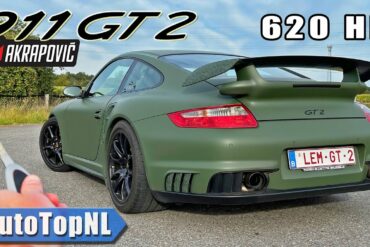

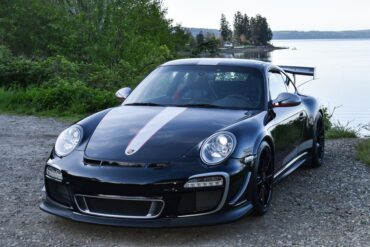
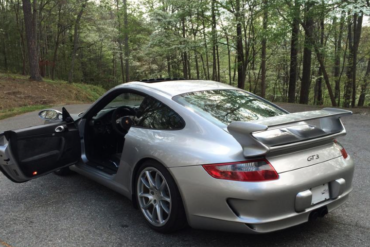
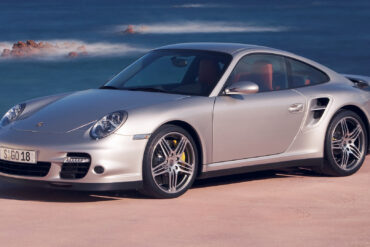
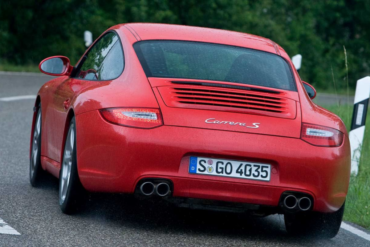
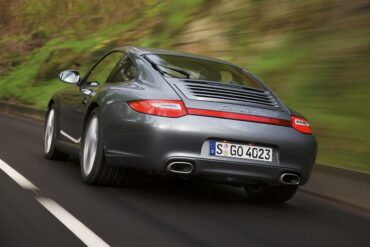
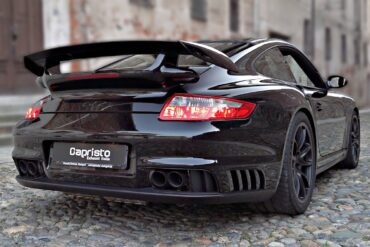
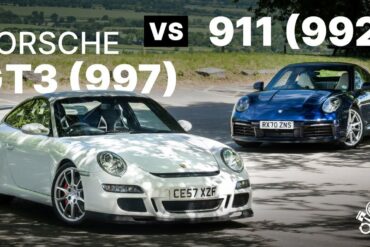
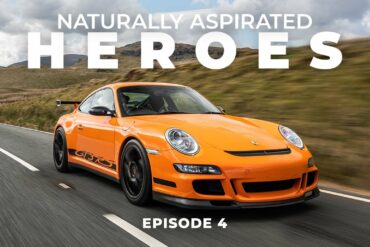
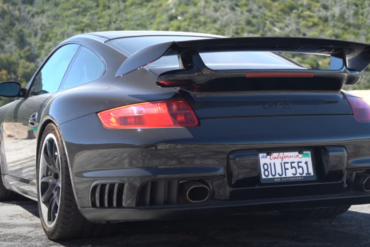

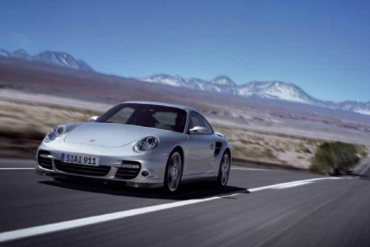
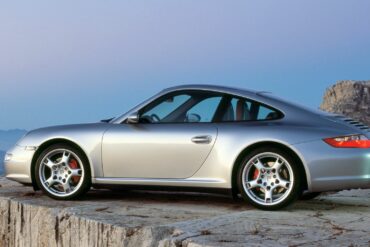
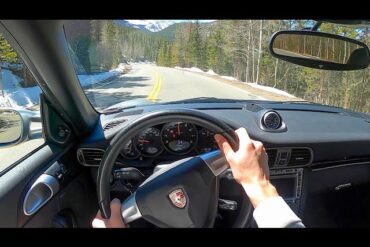
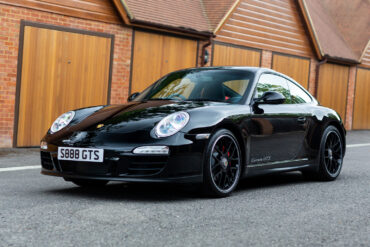
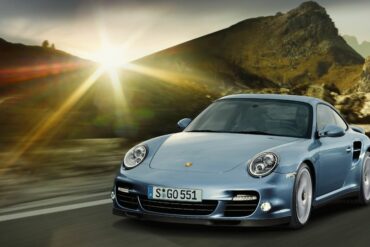
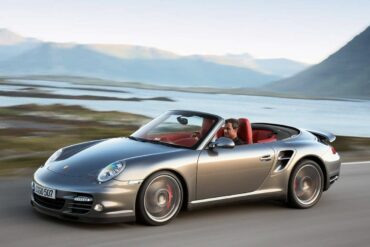
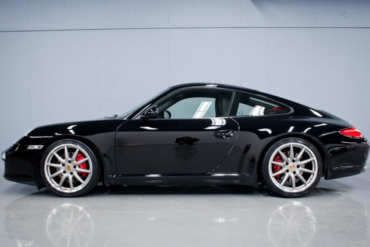
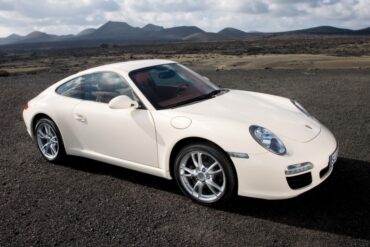
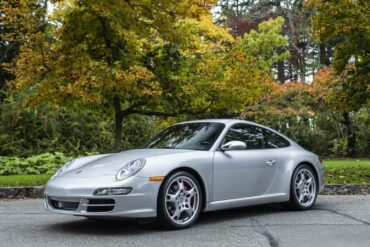
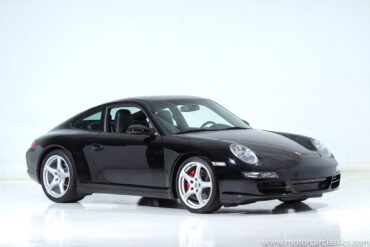
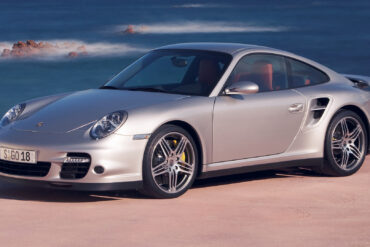
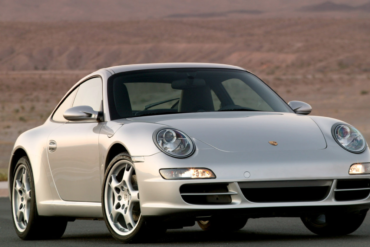
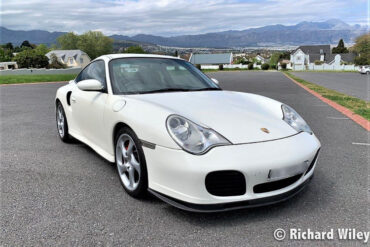

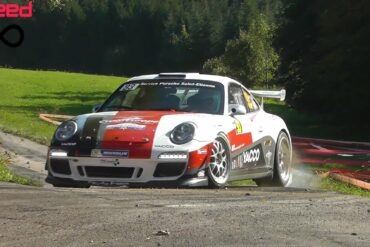
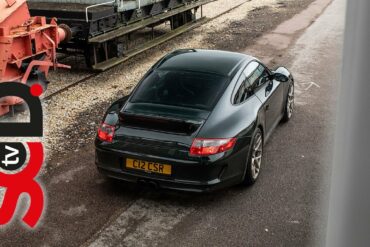
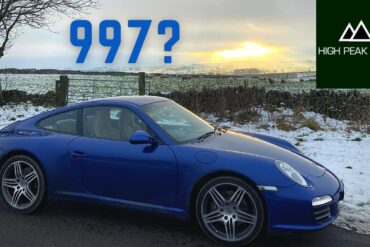
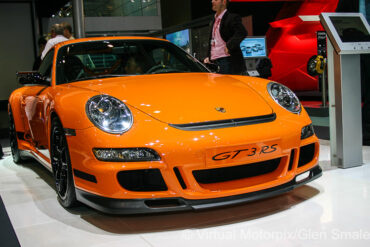

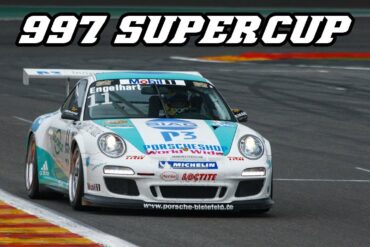
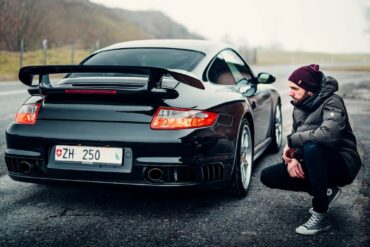
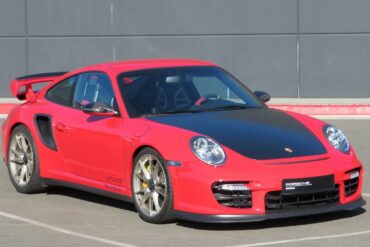
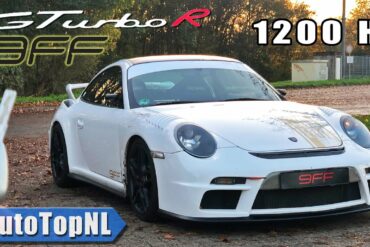
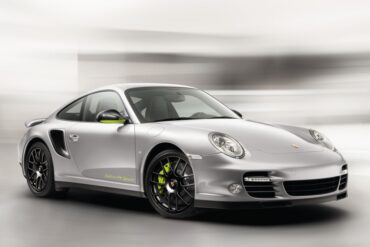

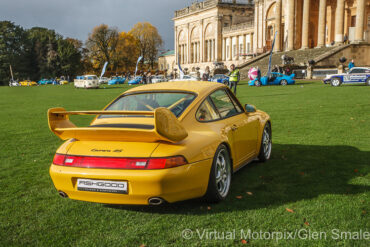
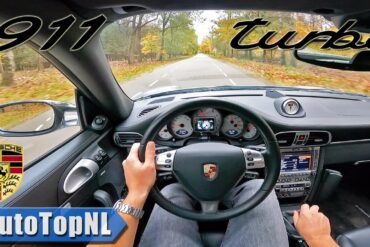
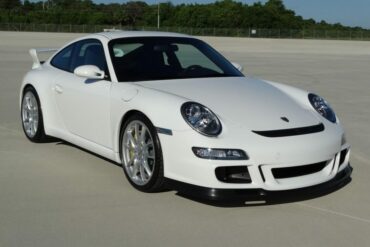

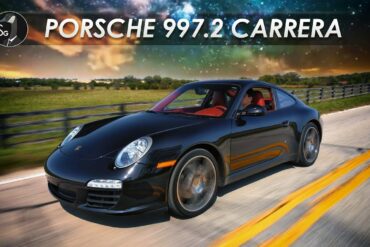
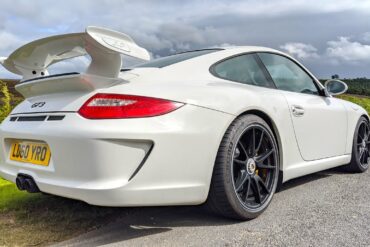
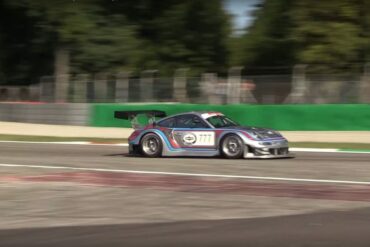
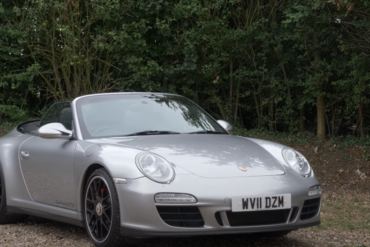

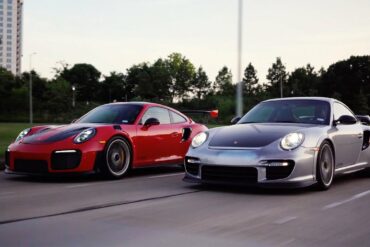

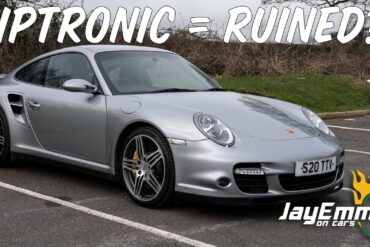
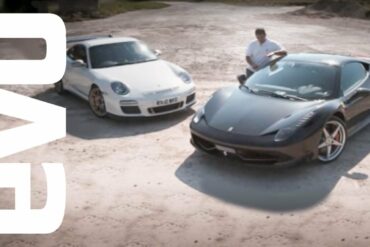
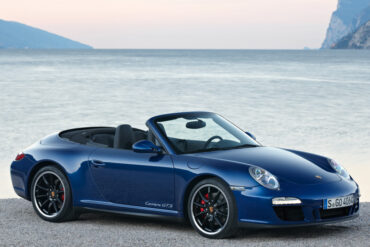
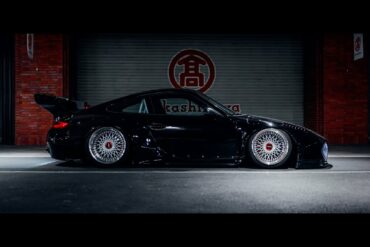
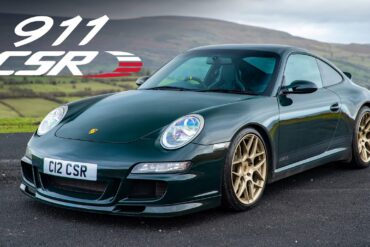
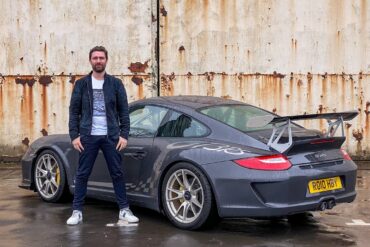
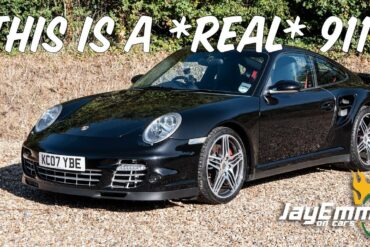
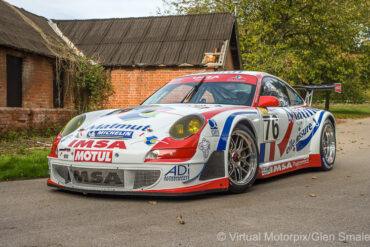
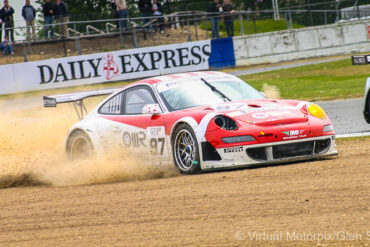

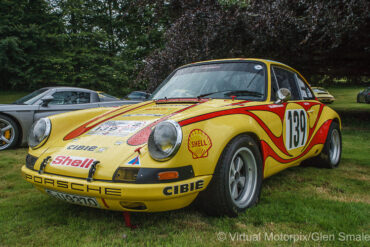
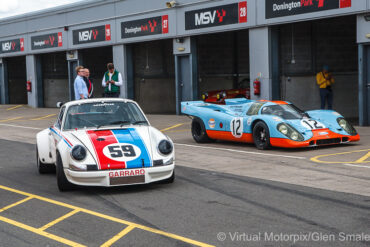
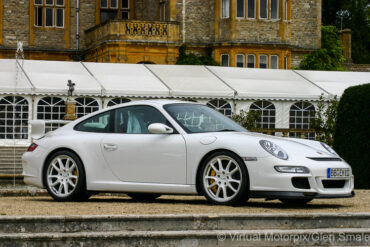
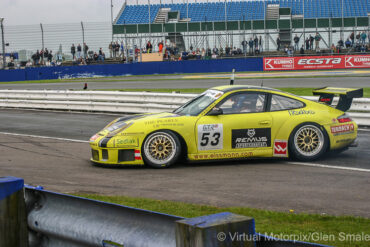
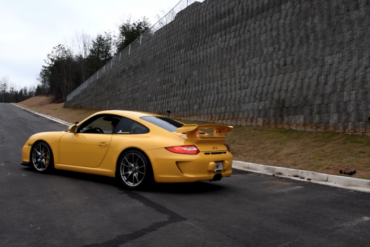
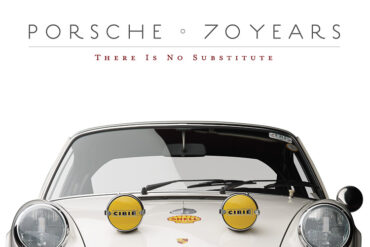
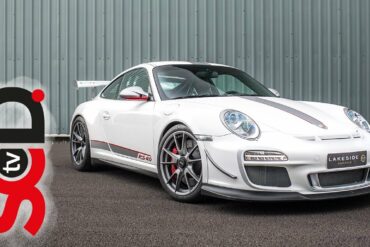
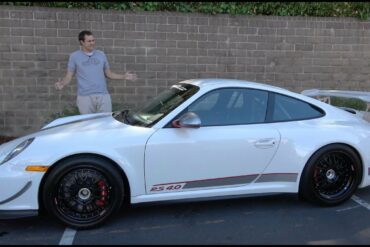
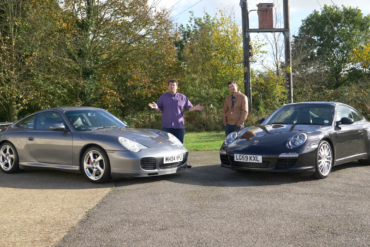
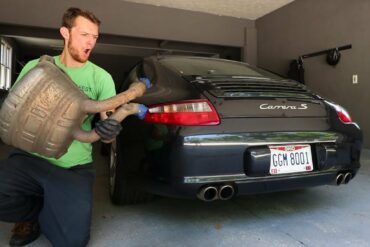
![Porsche 997 GT3 RS - ORGASMIC SOUND [CHASING PORSCHE 996 GT3] RAW POV](https://www.stuttcars.com/wp-content/uploads/2018/06/Porsche-997-GT3-RS-ORGASMIC-SOUND-CHASING-PORSCHE-996-GT3-RAW-POV--370x247.jpeg)
